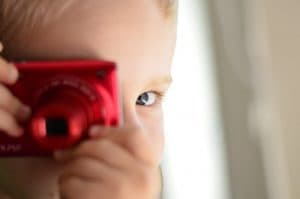Recent research from the National Eye Institute (NEI) shows that a lazy eye can be successfully treated at least up to age 17.
Lazy eye can now be effectively treated in children, teenagers and even adults!
For many decades, it has been thought that amblyopia (lazy eye) can only be treated for children up to around ages seven to nine years. In other words, lazy eye treatment was usually not provided to children older than nine.
What is amblyopia?
Amblyopia, also known as lazy eye, usually causes blurred vision in just one eye which contributes to poor binocular vision and depth perception.
Amblyopia affects up to 3 percent of all children.
Amblyopia may develop due to other vision conditions such as a crossed or wandering eye (strabismus), or unequal vision in the two eyes caused by astigmatism, farsightedness or nearsightedness.
NEI research
A supported research study conducted by the National Institute of Health/National Eye Institute (NIH/NEI) has disproved the long held belief that children with lazy eyes, or amblyopia, cannot be helped after a known cut-off age. In the past, the cut-off age for treating a lazy eye was said to be anywhere from seven to nine years.
This research was conducted at 49 eye centers across the U.S., including the Bascom Palmer Eye Institute, Mayo Clinic, The Emory Eye Center, The Ohio State University, Southern California College of Optometry, and the State University of New York, College of Optometry.
The study included 507 children between the ages 7-17, and found that it is possible to improve eyesight even in children up to age 17.
Results showed:
- 53 percent of 7 to 12 year-olds had improved vision following treatment.
- 47 percent of 13 to 17 year old children also gained improved eyesight.
Find an eye doctor near you to diagnose and manage you or your child’s lazy eyes.
SEE RELATED: What Is Lazy Eye?
Statements from the doctors involved
Michael X. Repka, M.D., Wilmer Eye Institute of Johns Hopkins University School of Medicine, one of the study’s lead authors:
- “This study confirms that older children and teenagers with amblyopia [lazy eye] may benefit from treatment even at an age traditionally regarded as too old for success.”
Paul A. Sieving, M.D., Ph.D., Director of the National Eye Institute.
- “This research will have a significant impact on how eye doctors manage children with amblyopia. Doctors can now feel confident that traditional treatments for amblyopia will work for many older children”
Dr. Mitchell Scheiman. O.D. FCOVD, Director of Paediatric and Binocular Vision, Pennsylvania College of Optometry.
- “Parents should seek a second opinion from an eye doctor with experience in treating lazy eyes in children of all ages.
- With proper optical correction and an active treatment program, including eye patching and vision therapy to stimulate vision in the lazy eye, many children can obtain improved vision regardless of age.”
LEARN MORE: Vision Therapy for Lazy Eye
Contact an eye doctor near you that has experience treating lazy eye for both adults and children.
Reference:
Scheiman MM, Hertle RW, Beck RW, Edwards AR, Birch E, Cotter SA, Crouch ER Jr, Cruz OA, Davitt BV, Donahue S, Holmes JM, Lyon DW, Repka MX, Sala NA, Silbert DI, Suh DW, Tamkins SM; Pediatric Eye Disease Investigator Group. ‘Randomized trial of treatment of amblyopia in children aged 7 to 17 years’. Arch Ophthalmol. 2005 Apr;123(4):437-47.

